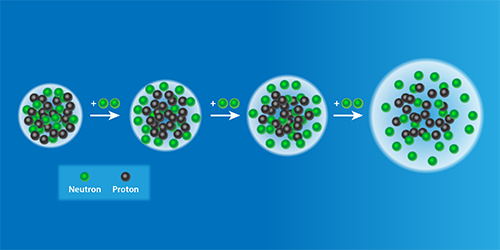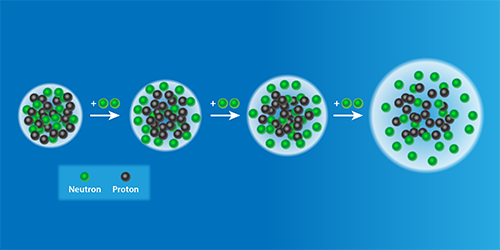Tin Gets Kinky
Many atomic nuclei steadily swell in size as more neutrons are stuffed in, until the number of neutrons hits some “magic” value. At that point, there’s a jump in how fast their radii grow. These “kinks,” which reflect changes in how strongly neutrons and protons tug on each other as nuclear shells fill up, have been seen for just a handful of isotopes. Now, researchers have observed a nuclear kink for tin. This result helps test models of nucleon interactions, some of which predict that there should be no kink for tin.
Discussions about the origin of kinks largely focus on lead-208. This isotope is “doubly magic”—that is, its proton shells are also full (see 6 November 2017 Viewpoint)—causing it to have a spherical nucleus, which simplifies interpretations of its measured size. Tin-132 is also doubly magic, but the isotope has yet to come under the same experimental scrutiny.
Using a laser spectroscopy facility at CERN called COLLAPS, Christian Gorges of Darmstadt University of Technology in Germany, Liss Rodriguez of the French Institute of Nuclear Physics, and colleagues measured the radii of a number of tin isotopes. They found that the nuclear radius steadily increases from about 4.56 fm for tin-108 to 4.71 fm for tin-132. But from tin-132 to tin-134, they observe a significant jump in radius to 4.73 fm—a change roughly 60% greater than expected from the radius’ previous path—clearly signifying a kink.
Comparing their data to predictions from different theoretical models, the team found that their observation supports one specific model of the strong interaction between nucleons inside the nucleus. This model suggests that the kink arises from a reduction in the strength of pairing interactions among neutron pairs when tin turns doubly magic.
This research is published in Physical Review Letters.
–Christopher Crockett
Christopher Crockett is a freelance writer based in Arlington, Virginia.





